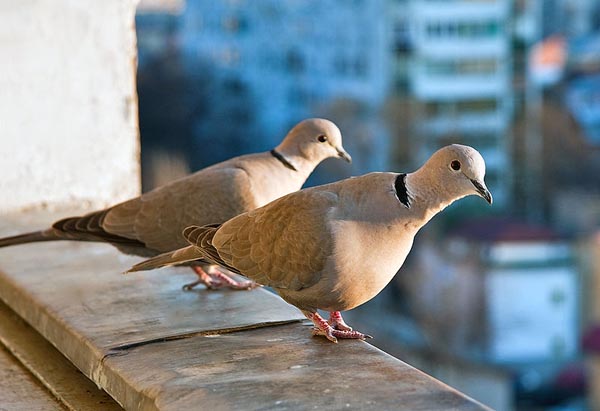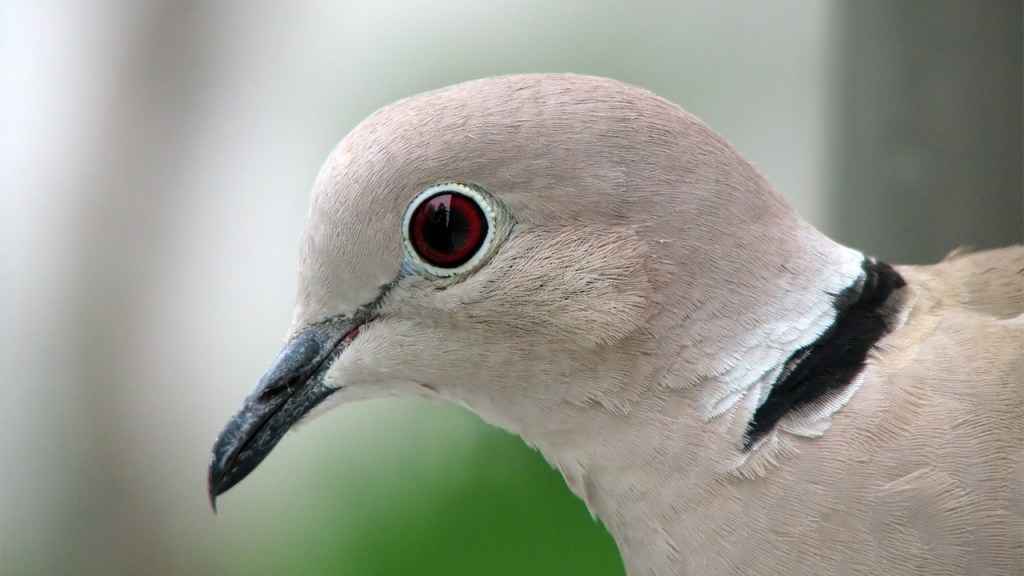The Great Backyard Bird Count (GBBC) — one of the largest citizen science initiatives in the world – annually documents a wide variety of bird population trends.
To my mind, one of the most interesting has been the dramatic spread of the non-native Eurasian collared dove across North America.
The GBBC asks citizen birders to watch an area for at least twenty minutes sometime during a four-day period in mid-February (this year’s count concluded yesterday), and record the birds they see.
Just ten years ago, seeing a Eurasian collared dove would have been a novelty. No more: the doves are now commonly reported by birders in most of the United States.
GBBC data tell the story of this rapid spread.
In the 1970s, the Eurasian collared dove was introduced to the Bahamas. By the early 1980s, the non-native birds made their way to South Florida, where they established populations. Then they began spreading north and west.
Their range appears to have expanded slowly at first. A look at GBBC reports from 1998 show a lot of sightings in Florida, with some birds reported in Texas, Alabama and Arkansas.
By 2001, the doves reached California.
Last year’s bird count results showed the Eurasian collared dove had colonized much of the country. It has not (yet) been reported in New England, but it has reached as far north as Alaska.
The GBBC’s video map dramatically illustrates this expansion.
In my state of Idaho, the doves were first recorded in 2005 by two backyard birders. In subsequent years, the bird was commonly reported in Idaho’s eastern corners. Last year, 132 GBBC participants reported 719 doves throughout the state.
I saw my first Eurasian collared dove in our backyard in 2008 – a banded bird that may have been an escaped pet. Last year, I began seeing the doves hanging around our neighborhood. This year was the first that I noted the species during my own participation in the Great Backyard Bird Count.
What’s going on here? Should conservationists be concerned about this spread?
Unlike some dove species, Eurasian collared doves aren’t migratory. However, they do readily expand into new suitable habitat. In fact, in their native Asia, Eurasian collared doves have been rapidly expanding their range as well – colonizing new countries every year.
The dove is one of those species that adapts well to humanity. The trees, power lines and bird feeders of suburbia provide perfect habitat. The Eurasian collared dove is almost always seen near homes and farms, not unbroken forest or prairie.
Research indicates it is not adversely affecting native mourning doves or other birds. It may simply be filling a new habitat niche created by suburban habitat. But it is still early in the spread.
Could Eurasian collared doves become an invasive threat? That remains to be seen.
Citizen science projects like the GBBC and another citizen initiative, Project FeederWatch, will help scientists continue to track the spread and impacts of the species. It will be interesting to learn what this year’s count found about Eurasian collared doves. If past years are any indication, their populations will likely have grown and spread into new areas of the country.
Have you seen Eurasian collared doves in your area? Have you noted other trends during your backyard bird counts? Let us know what you’re seeing!





We have had Eurasian doves at our feeders in Phoenix now for about four years. They seem to say “take me out a steak “ . We haven’t taken one out for them yet!
HEY MATTEW I FEED THE DOVES. CLEVELAND NATION FOREST IS MY BACK YARD SOUTHERN CA. TODAY4/23/2020 WAS THE FIRST TIME I SEEN A EURASIAN COLLARED DOVE. IT WAS THE ONLY ONE. ARE THEY SOLO OR ARE THERE IN GROUPS. I DID NOT KNOW WHAT IT WAS UNTIL I FOUND YOUR PAGE. HOPING TO SEE MORE.
Santa Cruz, California. I have one in my yard. I’m hoping it has a nest. I’m just realizing what kind of bird. Very cool.
Have numerous eurasian doves in roseville ca. Eat out our feeders every day! Very large!
i have 8 doves at bird feeder every day
When we moved to our new home in SW Utah in 2004 we had a small number of Morning Doves. We enjoyed hearing their soft cooing. We didn’t start seeing the invasive ones come on strong until around 2014 or there about. Now they have taken over in droves. Their coo, to our ears is very annoying. Louder, not as soothing sounding as the Morning Doves coo. At any rate, we are seeing less Morning Doves then before. Or maybe it seems that way because of the much larger number of Eurasian Doves seen and they seem to keep multiplying at an astonishing rate. To bad, I wish the Morning Dove population was in the majority. As a matter of fact I wish we just had the Morning Doves around. Not a fan of the Eurasian Doves at all.
We’ve seen this dove in our backyard eating seed on the ground under our bird feeder intermittently for the past three years and today is the first sighting of the season.
I live in Las Vegas Nevada and I have anywhere from 18 – 25 of the birds in my backyard daily. I think they are such a pretty bird compared to the common ground doves I normally have seen for the last 18 years. I normally see about 5 of the ground doves in my current location but in the past I could see up to 10 in the early morning hours
I have also noticed they are also cross breeding with local doves—the dark grey doves are almost same size as ring neck ones
In Wyoming, these birds showed up in great numbers about 2000. I started depleting their numbers and recorded kills beginning in 2012. Result are:
2012 – 55
2013 – 55
2014 – 81
2015 – 67
2016 – 50
2017 – 29
2018 – 19
2019 – 4
Have seen non here since early June, 2019
I have two that daily visit my bird feeder. The first site was in September, 2019. I live in Carson City, Nevada. I also have a single light brown that visits.
I have one Eurasian dove in my backyard every morning. I live in Carlsbad, Ca. And they are not on my local bird chart. Is this unusual?
First time I have seen them in my backyard: a pair has been coming to my ground feeder for a few weeks now in Salem, Oregon. They are very timid and don’t seem to be competition for any other birds at this time.
We have a number of these at our feeders every day, even in the winter there are a few. Biggest count at one time was 12. They seem to show up in pairs. We also have the little brown doves with dark spots. A year ago we had what appeared to be one of the little brown ones, but it had a topknot, which we had never seen before. It resembled the pictures of a dove from Australia that has the topknot.
I have the same brown dove. It might be a mourning dove.
Google search – The mourning dove is a member of the dove family, Columbidae. The bird is also known as the American mourning dove or the rain dove, and erroneously as the turtle dove, and was once known as the Carolina pigeon or Carolina turtledove. It is one of the most abundant and widespread of all North American birds
I have spotted a pair of these in my yard, Sun Valley, CA 91352.